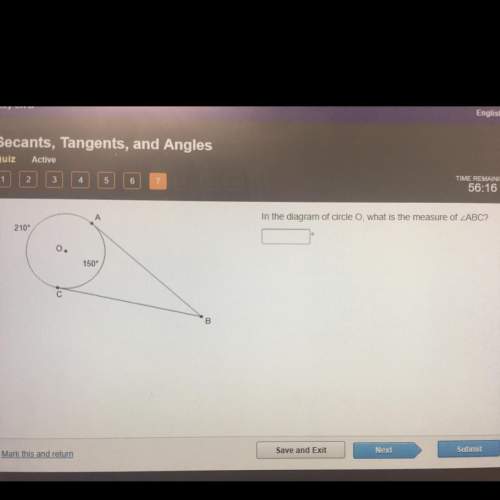
Mathematics, 22.04.2020 02:09 robertjoy19
The National Institute of Standards and Technology (NIST) offers Standard Reference Materials to aid in the calibration of measurement instruments and verify the accuracy of measurements. Suppose a medical researcher wants to verify that the distances he measures with his computed tomography machine are not too large, so he orders a Dimensional Standard for Medical Computed Tomography from NIST. This standard consists of 18 plastic balls held in place by a plastic support structure. The certified distance between the balls numbered 1 and 2 is 15.96 mm, and NIST determines that measurement errors are normally distributed with a standard deviation of 0.05 mm. Upon receiving the Standard Reference Material, the researcher measured the distance between balls 1 and 2 five times. Take these five measurements to be a simple random sample of all measurements made on this device under carefully controlled conditions. The researcher then calculated the summary statistics, where is the mean distance between balls 1 and 2, as measured by his computed tomography machine. Test of =15.96 vs >15.96The assumed standard deviation=0.05Samplesize Samplemean Standarderror x⎯⎯⎯ SE5 16.02 0.02236(1). Complete the analysis by calculating the value of the one-sample z-statistic, the p-value, and making the decision. First, calculate z to at least two decimal places. z=(2).Use software or a table of standard normal critical values to determine the p‑value. Give your answer precise to at least four decimal places. p=(3). Should the researcher reject his null hypothesis if his significance level is =0.05?A. Yes, there is enough evidence (p<0.05) that the mean distance between balls 1 and 2, as measured by his computed tomography machine, is greater than 16.02 mm. B. No, there is not enough evidence (p>0.05) that the mean distance between balls 1 and 2, as measured by his computed tomography machine, is greater than 16.02 mm. C. No, there is not enough evidence (p<0.05) that the mean distance between balls 1 and 2, as measured by his computed tomography machine, is greater than 16.02 mm. D. Yes, there is enough evidence (p>0.05) that the mean distance between balls 1 and 2, as measured by his computed tomography machine, is greater than 16.02 mm.

Answers: 3


Another question on Mathematics

Mathematics, 21.06.2019 19:00
When keisha installed a fence along the 200 foot perimeter of her rectangular back yard, she left an opening for a gate.in the diagram below, she used x to represent the length in feet of the gate? what is the value? a. 10 b. 20 c. 25 d. 30
Answers: 1

Mathematics, 21.06.2019 21:20
Find the distance from the theater to the library. leave your answer in simplest radical form if necessary. 12 √12 74 √74
Answers: 2

Mathematics, 22.06.2019 00:20
Given sin28.4=.4756, cos28.4=.8796, and tan28.4=.5407 find the cos of 61.6
Answers: 2

Mathematics, 22.06.2019 00:30
Intro biblioteca sunt 462 de carti cu 198 mai putine enciclipedii si cu 47 mai multe dictionare decat enciclopedii cate enciclopedii sunt in biblioteca
Answers: 1
You know the right answer?
The National Institute of Standards and Technology (NIST) offers Standard Reference Materials to aid...
Questions

Mathematics, 04.10.2020 15:01


Geography, 04.10.2020 15:01

History, 04.10.2020 15:01






Mathematics, 04.10.2020 15:01

Mathematics, 04.10.2020 15:01

Biology, 04.10.2020 15:01


Mathematics, 04.10.2020 15:01






Mathematics, 04.10.2020 15:01




